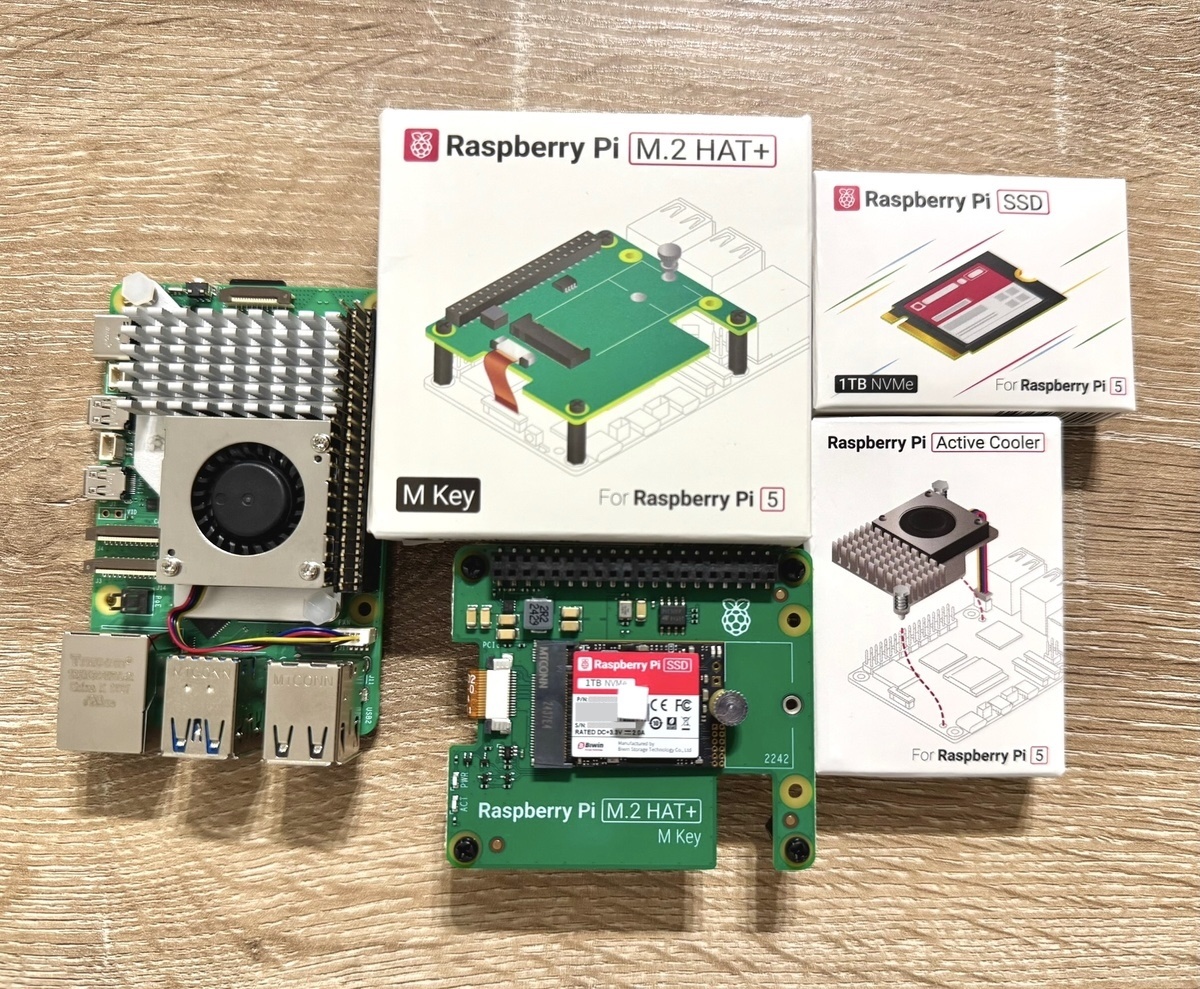Raspberry Pi
- About
- Configuring locale
- Configuring network
- Checking temperature
- Turning off all LEDs
- Enabling cgroups
About
Raspberry Pi is a series of small single-board computers (SBCs). I use Raspberry Pi 5 as a simple home server running Kubernetes (using K3S). On this page, you can find some notes about Raspberry Pi 5 configuration.


Configuring locale
If you change locale in Raspberry Pi Imager during the installation of Raspberry Pi OS, you might see the following warning message when logging in to the Raspberry Pi via SSH:
setlocale: LC_ALL: cannot change locale (en_US.UTF-8)
To fix this issue, do the following:
- Edit
/etc/locale.genfile:sudo vi /etc/locale.gen - Uncomment the line containing
en_US.UTF-8. - Update locale:
sudo locale-gen en_US.UTF-8 sudo update-locale en_US.UTF-8 - Done, the issue should be resolved.
Configuring network
If you want to use Raspberry Pi as a server in your local network, you will need a static IP address. To configure a static Wi-Fi IP address, do the following (assuming that NetworkManager is used for network configuration in your OS):
- Edit your Wi-Fi connection settings in NetworkManager:
sudo vi /etc/NetworkManager/system-connections/preconfigured.nmconnection - In the
[ipv4]section, set your desired static configuration. For example:[ipv4] address1=192.168.1.5/24 gateway=192.168.1.1 dns=192.168.1.1 method=manual - In the
[wifi]section, disable power save mode to ensure the Wi-Fi adapter is always available (does not go to “sleep” mode):[wifi] powersave=2 - Restart NetworkManager (be careful, IP address will be changed):
sudo systemctl restart NetworkManager - Done, check that the IP address has changed. And check that power save mode is disabled:
sudo nmcli connection show preconfigured | grep powersave 802-11-wireless.powersave: 2 (disable)
If multiple Wi-Fi networks share the same SSID, and you connect to Wi-Fi using SSID only, you may see the following log messages:
sudo journalctl | grep Associated
... wpa_supplicant[XXX]: wlan0: Associated with 11:22:33:44:55:55
... wpa_supplicant[XXX]: wlan0: Associated with 11:22:33:44:55:77
... wpa_supplicant[XXX]: wlan0: Associated with 11:22:33:44:55:55
... wpa_supplicant[XXX]: wlan0: Associated with 11:22:33:44:55:77
This indicates that Wi-Fi is constantly reconnecting to different networks. Eventually, the router may block the connection and disconnect the device:
sudo journalctl | grep WRONG_KEY --context 15
... wpa_supplicant[XXX]: wlan0: CTRL-EVENT-DISCONNECTED bssid=11:22:33:44:55:55 reason=6
... wpa_supplicant[XXX]: wlan0: WPA: 4-Way Handshake failed - pre-shared key may be incorrect
... wpa_supplicant[XXX]: wlan0: CTRL-EVENT-SSID-TEMP-DISABLED id=0 ssid="WIFINETWORK" auth_failures=1 duration=10 reason=WRONG_KEY
... NetworkManager[XXX]: <info> ... device (wlan0): supplicant interface state: 4way_handshake -> disconnected
To fix this, add the BSSID to the NetworkManager configuration ([wifi] section) and restart NetworkManager:
[wifi]
ssid=WIFINETWORK
bssid=11:22:33:44:55:55
To find the correct BSSID, do the following:
sudo nmcli device wifi rescan
sudo nmcli device wifi list
IN-USE BSSID SSID MODE CHAN RATE SIGNAL ...
* 11:22:33:44:55:55 WIFINETWORK Infra XXX XXX Mbit/s XX ...
11:22:33:44:55:77 WIFINETWORK Infra XXX XXX Mbit/s XX ...
Checking temperature
To check Raspberry Pi temperature, run the following command:
vcgencmd measure_temp
temp=52.7'C
To check the cooling device state (fan speed), run the following commands:
# Current state
cat /sys/devices/virtual/thermal/cooling_device0/cur_state
1
# Maximum value
cat /sys/devices/virtual/thermal/cooling_device0/max_state
4
Turning off all LEDs
To turn off Raspberry Pi 5 LEDs, do the following:
- Edit
/boot/firmware/config.txtfile:sudo vi /boot/firmware/config.txt - Add the following at the end of the file (in the
[all]section):# ADDED: Turn off all LEDs dtparam=pwr_led_trigger=default-on dtparam=pwr_led_activelow=off dtparam=act_led_trigger=none dtparam=act_led_activelow=off dtparam=eth_led0=4 dtparam=eth_led1=4 - Reboot:
sudo reboot - Done, LEDs should be turned off.
It’s not possible to turn off the M.2 HAT+ and SSD LEDs, so I just covered them with electrical tape.
Enabling cgroups
If you want to install Kubernetes (in my case, K3S), you should enable cgroups.
Do the following:
- Edit
/boot/firmware/cmdline.txtfile:sudo vi /boot/firmware/cmdline.txt - Add the following to the end of the line:
cgroup_memory=1 cgroup_enable=memory - Reboot:
sudo reboot - Done, check that
cgroupsare enabled:cat /proc/cmdline ... cgroup_memory=1 cgroup_enable=memory mount | grep cgroup cgroup2 on /sys/fs/cgroup type cgroup2 ...